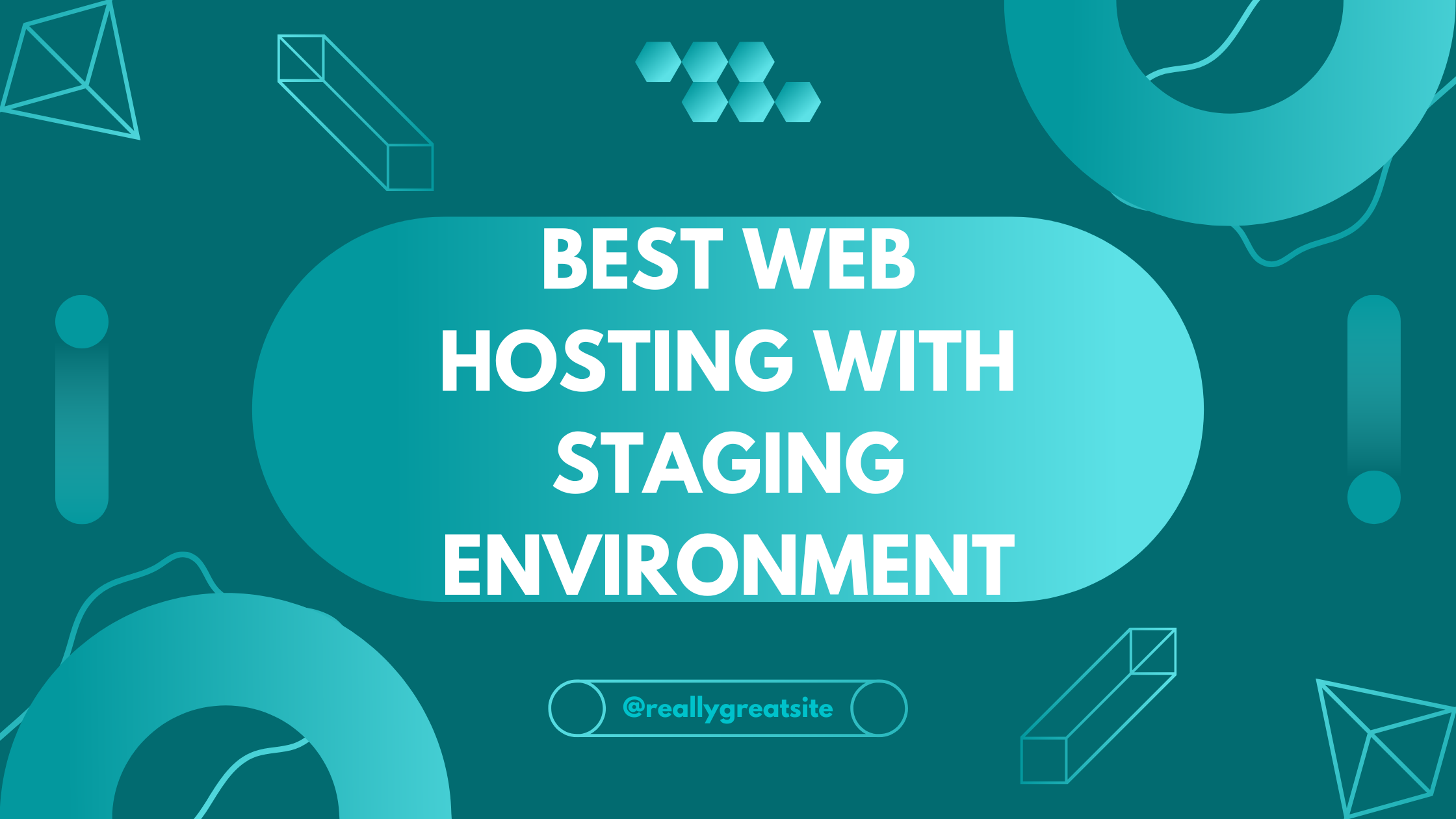
When choosing the best web hosting with a staging environment, it’s crucial to understand how staging works and why it benefits your website development process. A staging environment allows you to test changes to your website before they go live, ensuring that everything works perfectly without affecting the live site. This is especially important for developers, designers, and businesses that want to maintain a seamless user experience.
Let’s dive into some of the top options for web hosting services that provide staging environments.
1. WP Engine
Pricing: WP Engine offers premium managed WordPress hosting plans, starting at $20 per month for their basic plan. They also offer higher-tier plans for more advanced features, including dedicated environments and enterprise-level solutions. All plans come with a robust staging environment for seamless website management.
Where to Buy: You can purchase WP Engine hosting directly from their website at wpengine.com.
Features: WP Engine is renowned for its powerful staging tools, allowing users to create a duplicate of their live WordPress site with just a few clicks. This staging environment lets you experiment with changes, plugins, and themes safely before pushing updates to your live website. WP Engine also includes daily backups, top-tier security, and excellent customer support, ensuring that your site is always protected and optimized for performance.
Why Choose WP Engine: WP Engine’s staging environment is perfect for WordPress users who need a secure and easy-to-use platform to test and refine changes. With their hassle-free cloning tool and expert support, you can confidently manage updates without disrupting your live site’s functionality.
2. Bluehost
Pricing: Bluehost offers shared hosting plans starting at $2.95 per month, VPS hosting from $18.99 per month, and managed WordPress hosting from $19.95 per month. The staging environment feature is included in their WordPress plans.
Where to Buy: Visit bluehost.com to get started with Bluehost’s hosting services.
Features: Bluehost offers a staging environment for WordPress websites, making it easy to test any changes before pushing them to your live site. Their platform is user-friendly, and they offer excellent uptime and support.
Why Choose Bluehost: Bluehost is one of the most beginner-friendly hosting providers. Their staging tools are simple to use, and they also offer robust security features like SSL certificates, free CDN, and malware protection.
3. A2 Hosting
Pricing: A2 Hosting provides shared hosting starting at $2.99 per month, managed WordPress hosting from $11.99 per month, and VPS hosting from $5.00 per month. The staging environment is included in their higher-tier WordPress plans.
Where to Buy: Purchase A2 Hosting directly from a2hosting.com.
Features: A2 Hosting is known for its fast speeds and staging environments. Their staging feature lets you clone your website with just a few clicks, making it easy to test design and functionality changes before they go live. A2 Hosting also provides free SSL, Cloudflare CDN, and excellent customer support.
Why Choose A2 Hosting: A2 Hosting is a great choice for users who need fast loading times and reliable staging features. Their Turbo servers, which offer even faster speeds, are perfect for high-traffic websites.
4. Liquid Web
Pricing: Liquid Web offers premium managed WordPress hosting plans, starting at $19 per month for their basic plan. They also provide higher-tier plans with advanced features such as dedicated hosting environments, VPS options, and tailored solutions for enterprise-level needs. All plans include a robust staging environment to streamline the management of your website.
Where to Buy: You can purchase Liquid Web hosting directly from their website at liquidweb.com.
Features: Liquid Web stands out for its advanced staging tools, allowing users to create and test duplicate sites before making changes live. Their staging environment ensures that you can safely experiment with updates, plugins, and themes, minimizing the risk of disruptions. Additionally, Liquid Web offers daily backups, high-end security measures, and 24/7 customer support, ensuring optimal site performance and protection.
Why Choose Liquid Web: Liquid Web’s staging environment is ideal for businesses and developers who need a secure, seamless way to test and deploy changes. With their powerful staging tools and excellent customer support, you can confidently manage your WordPress site without compromising on performance or security.
In conclusion, the best web hosting with a staging environment will depend on your specific needs. Whether you’re a small business owner, developer, or designer, you’ll find a service that fits your requirements. WP Engine, Bluehost, A2 Hosting, and Liquid Web are some of the top choices to consider for seamless staging and website management.
Frequently Asked Questions (FAQs) About Web Hosting with Staging Environments
1. What is a staging environment, and why is it important for website development?
A staging environment is essentially a copy of your live website where you can test changes—such as updates, new features, or design adjustments—before making them public. This environment acts as a sandbox, allowing developers, designers, and business owners to try out new code, themes, plugins, and configurations without the risk of breaking the live site. It ensures that all changes are thoroughly tested in a controlled setting before they affect the user experience on your live website. The primary importance of a staging environment lies in preventing downtime, maintaining the quality of user experience, and safeguarding against potential errors that could disrupt your business operations.
2. Can I set up a staging environment on any hosting plan, or do I need a specific type of plan?
Staging environments are typically available on managed hosting plans, and not all hosting plans include this feature. Hosting providers like WP Engine, Bluehost, A2 Hosting, and Liquid Web offer staging environments as part of their WordPress or higher-tier managed hosting plans. Shared hosting plans usually don’t include staging, as they tend to be more basic and less flexible in terms of functionality. If you require a staging environment, it’s essential to ensure that the hosting plan you choose includes this feature. Most premium plans will provide this feature along with additional tools for website management.
3. How do I set up a staging environment on my web hosting service?
Setting up a staging environment generally involves creating a duplicate of your live website. Depending on your web hosting provider, this process may be automatic or require a few manual steps. For example, services like WP Engine and Bluehost provide one-click staging environments, where you can clone your live website with a simple button click. If your hosting plan does not offer an automated option, you may need to manually copy your files and database to a subdomain or a temporary directory. Once the staging environment is set up, you can start making changes without affecting the live site. Always ensure that your staging environment is regularly updated with the latest version of your live site.
4. What are the benefits of using a staging environment for testing website updates?
A staging environment provides several key benefits, including:
- Safe Testing: You can test new themes, plugins, and changes to your website without the risk of affecting your live site.
- Quality Control: By replicating the live site in the staging environment, you can identify issues and resolve them before pushing changes to your live website, ensuring a smoother user experience.
- Troubleshooting: If you encounter issues on your live site after a change, you can troubleshoot and resolve them in the staging environment before reapplying fixes.
- Backup Assurance: Since any changes are initially tested in staging, you ensure that the live site’s data and functionality remain safe from accidental disruptions.
- Performance Testing: The staging environment allows you to measure the impact of changes on the site’s load speed, performance, and overall user experience before deploying them.
5. Does a staging environment affect my website’s SEO?
A staging environment itself will not directly impact SEO because it is not indexed by search engines like Google. However, it’s crucial to ensure that your staging site is password-protected or blocked from search engine crawlers using a “noindex” directive to prevent it from being indexed. If search engines mistakenly index your staging site, it could lead to duplicate content issues, which may negatively affect your SEO rankings. Once you push changes to your live site, ensure that the correct version of the site is indexed.
6. How can I push changes from my staging environment to the live site?
The process of pushing changes from the staging environment to the live website varies depending on the hosting provider and the tools they offer. On platforms like WP Engine and Bluehost, there is usually a one-click option to “push” changes to the live site once you are satisfied with the updates made in the staging environment. This automatic deployment process ensures that the changes are reflected on the live site without any manual file uploads. If you’re using a less automated hosting service, you may need to manually transfer files and databases using FTP or other file management tools. Always make sure to back up your live site before pushing changes to avoid data loss.
7. Are staging environments only available for WordPress websites?
While staging environments are most commonly associated with WordPress hosting, they are not limited to WordPress sites. Many high-quality web hosting providers offer staging environments for a variety of content management systems (CMS) and custom websites, including Joomla, Drupal, and even static sites. The availability of staging tools will depend on the specific hosting service and the type of site you are running. Managed hosting services tend to be more likely to offer staging environments for different CMS platforms, while shared hosting services may not provide this feature at all.
8. Can I use a staging environment for websites with e-commerce functionality?
Yes, staging environments are particularly useful for websites with e-commerce functionality. Before launching updates or new features, it is essential to test everything, including checkout processes, payment gateways, product displays, and inventory management. For e-commerce websites, any error can lead to lost sales, making staging environments critical for ensuring that any changes made don’t disrupt your online store’s operations. Testing everything in the staging environment helps avoid potential issues with customers during their shopping experience.
9. Do all hosting providers offer staging environments, or should I look for specific features?
Not all hosting providers offer staging environments, and those that do may offer varying levels of functionality. When choosing a hosting provider with staging capabilities, look for the following features:
- One-Click Staging Setup: This feature allows you to quickly clone your live website without needing advanced technical skills.
- Automatic Synchronization: Some providers offer automatic synchronization between your staging and live sites, ensuring that any changes are reflected consistently.
- Backup and Restore Options: Ensure the provider offers the ability to create backups of your live site and restore it if necessary.
- Security Measures: The staging environment should be protected from search engines and unauthorized users to ensure no exposure of sensitive data.
Popular hosting services like WP Engine, Bluehost, A2 Hosting, and Liquid Web are known for offering robust staging environments, making them excellent choices for businesses and developers.
10. Can I use staging environments for multiple websites?
Yes, you can use staging environments for multiple websites, but this depends on the hosting provider and your plan. Some hosting providers offer multi-site management tools, allowing you to set up staging environments for several websites from a single account. Managed hosting services, in particular, may offer plans designed for agencies or developers who work on multiple sites at once. If you’re managing several websites, it’s essential to check whether the provider allows multiple staging environments, as this can help streamline your development and testing process across all your sites.






